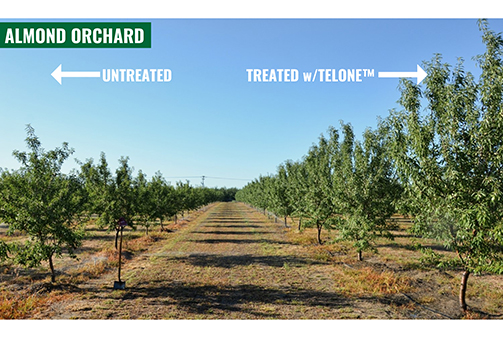Improving Your Irrigation Scheduling
At first thought the question above sounds like a dumb one. Of course we need to schedule irrigations — just like we schedule lunch; we get hungry, plants get thirsty. End of story. But how many of you skip lunch, or delay it? How often?
If you’re like some of us old agronomists who can’t jump across the head ditch as easily as we used to and you look down and can’t see as much of your feet as you did when you were 25, then you think, “Probably better if I skipped lunch anyway.” Then you think on this idea even more and you say, “Well, I just ain’t gonna eat anything until I see this gut disappear.” But we all know this is bad idea as we still need balanced nutrition regularly even if we do have some extra weight.
So before you think I’m completely out to lunch, here’s the connection: If you don’t irrigate until you see the crop stress, you’ve waited too long. If you just keep irrigating every three days with microsprinklers (Hey, that’s a schedule, right!?) from May to August without checking the soil/plant water status, it’s like eating that foot-long sub sandwich every day for lunch and never stepping on the scale! Neither extreme is healthy for you or the crop.
Farming Scientifically
In many ways California’s San Joaquin Valley has already been placed on a forced diet. A combination of hydrologic and “judicial” drought (the latter being restrictions of State and federal project pumping out of the Sacramento Delta due to Endangered Species Act listing of the Delta smelt.) has drastically cut the import of fresh water to the valley over the last three to five years. Growers and water districts have responded by pumping more groundwater, buying “emergency pool” water and other market trades, improving field irrigation efficiency where possible, and finally reducing applied water when they just don’t have enough.
Now, more than ever, we need to know how to use available information and technology for optimal water use. OK, so I need more than just a calendar to do the best job of irrigation. But what’s this “scientific” thing? Does that mean I have to have a bunch of sensors, loggers, and all that stuff? Not at all. In fact, the dictionary meaning of science is NOT “using a bunch of gizmos/technology” but defined as: “systematic knowledge of the physical or material world gained through observation and experimentation.” Wow, sounds pretty close to the definition of a good farmer! Being scientific simply means being consistent in how you record and analyze your observations so that you can develop a system for making the best decisions. This is where gizmos/technology are helpful, as they are tools to collect and analyze data/observations. Some of the most useful gizmos are strictly mechanical.
You can actually do scientific scheduling with no electronics at all; just your hands, a soil probe/auger, regular walks through the field, a notebook and a flometer or weir to record your actual applied water. This was all we had 40 years ago. You don’t even need a computer in the office! But most of us are farming too much acreage to know each field this intimately, and we get tired of pounding/twisting soil probes and augers down to 5 feet. This is where electronic sensors, loggers and automated computer programs are helpful. These devices will automatically collect the data and can do the number crunching that saves you a lot of hand calculation.
You Make The Call
The only problem with such devices is that they’re dumb. They don’t think, and they’re usually stuck in one location without the ability to “look around” at the rest of the block. Thus, it’s possible to do “technified” irrigation scheduling (this is the term they like in South America) with all this technology without it being truly “scientific.” In other words, you can collect a whole bunch of numbers, but it’s still up to the grower/manager to take those numbers and trends and turn them into systematic knowledge for truly optimal scheduling.
Once you determine your soil water holding capacity and irrigation system design application rate, these will be fairly constant. Then the only in-season things that may vary and should be monitored are:
• Salinity in the root zone and irrigation water — how good or bad is it?
• Soil/root zone water content — how much is available, how fast are the plants using it?
• Irrigation frequency — how often?
• System uniformity — how even are my pressures, how often to flush hoses?









